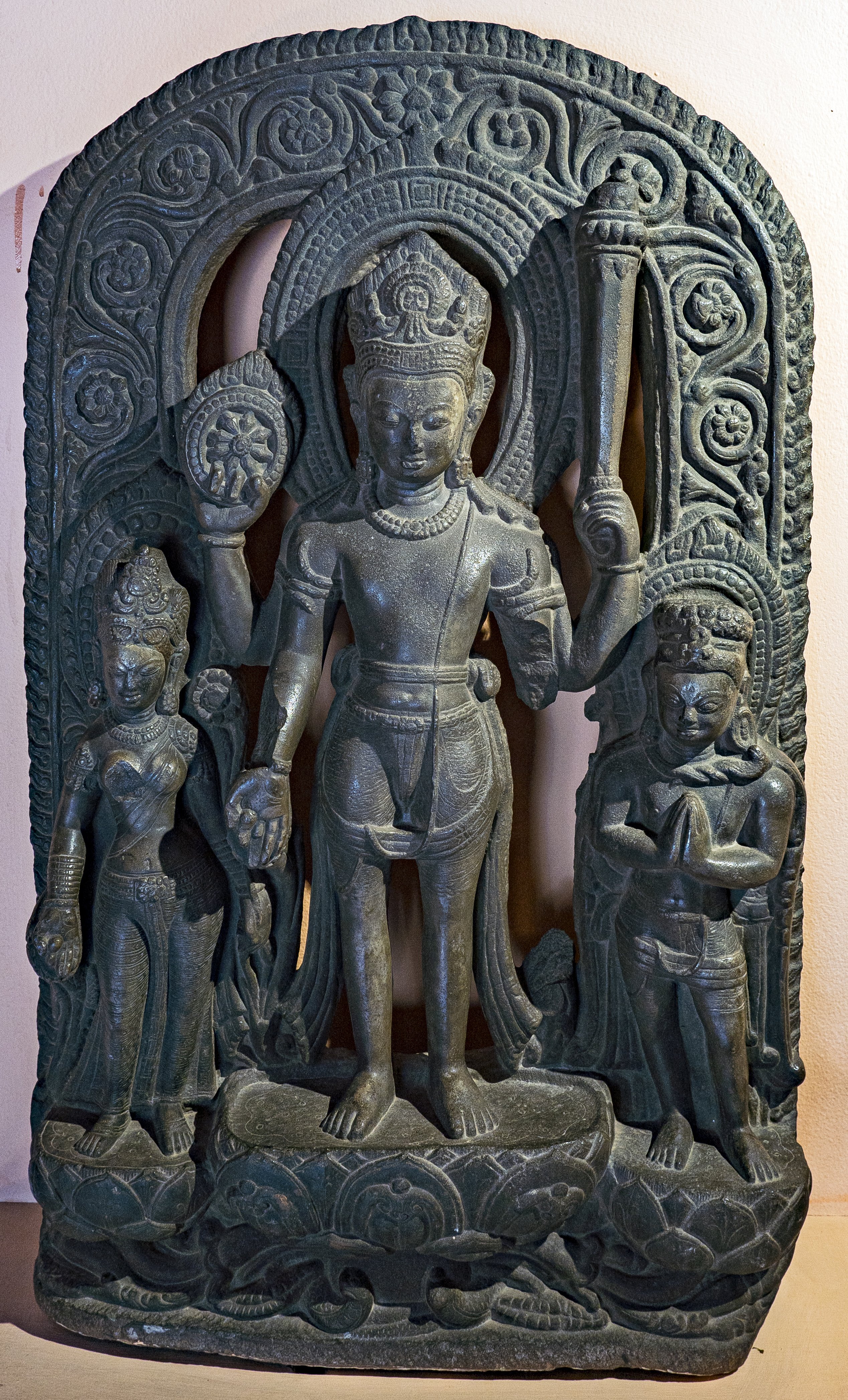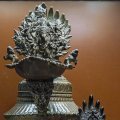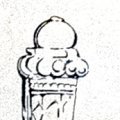Patan Museum (Nepal): photo 171
Photo 171 of 212 in Gallery: Patan Museum (Nepal)

Image title: Vishnu (Preserver of the Universe)
Description of the photo
Vishnu is one of the most important deities in Nepal. He is a resplendent and benevolent savior whose primary function is to maintain cosmic order and preserve the universe.
Like other deities he has many manifestations but few of this are wrathful. In Nepal one of his most popular forms is as the Supreme Lord or Universal Monarch, a majestic being in standing pose displaying his four symbolic attributes—mace, discus, lotus, and conch shell. He is often accompanied by one or both wives, Lakshmi and Saraswati, and his mount Garuda, a composite bird-man.
At other times as “Vishnu-Seated-on-Garuda” (Garudasana Vishnu), the god soars through the heavens observing the affairs of the universe. In still another mythic depiction Vishnu reclines on the serpent Ananta or Shesha afloat in the primordial ocean, drowsing between Cyclical destructions of the universe before rousing to fashion it anew. This manifestation is known by many names, such as “Narayana Lying on the Water” (Jalashayana Narayana) or simply, “Sleeping Vishnu.” It is particularly well-represented by the dramatic seventh century colossal stone sculpture lying in a pool at Budhanilakantha on the northern outskirts of Kathmandu.
Vishnu, or “Narayan” [Narayana]—the name preferred by Nepalis—has incarnated himself through the ages in various guises to combat disruptive evil influences which threaten the universe. Known as avatars [avataras] (“descent forms”), his incarnations traditionally are ten in number (Dashavatara) and include various animal shapes (fish, turtle, boar), a Man-Lion, a dwarf, the Buddha, the gods Rama, Balarama, and Krishna, and—still to come—Vishnu on, or as, the white horse, Kalki.
Image of Vishnu are preferred for worship put he may be worshiped in the shape of his footprints yr as the fossil mollusk known as shaligram [shaligrama]. The basil plant (tulasi) is also sacred to Vishnu and implies his presence.
The Four Emblems of Vishnu
Vishnu has four primary emblems or attributes which express his functions and power. Occasionally, two of the four attributes are anthropomorphized and stand beside the god as small images. In that form they are called “helping men” (ayudha-purusha).
Gallery information:
The Patan Museum is located on the Durbar square of Patan (Lalitpur/Lalitapura, Kathmandu, Nepal) which is associated Keshav Narayan Chowk (Keshavnarayan)—a form of Lord Vishnu. Being listed as a World Heritage Site, the whole of Durbar square is filled with exquisite temples, sculptures and other ancient structures, of which the ancient history history can be traced to the Malla Kings of Lalitpur. It is an important site for both Buddhism and Hinduism.
Photo details:
Date: 2019-12-02
Camera: SONY ILCE-6400
Exposure: 1/20
Aperture: f/5
ISO: 100
Focal length: 18mm
High resolution:
Download file
Size: 6.16 MB
Resolution: 2538 x 4188
© Photograph by Gabe Hiemstra.
License: CC BY-NC-ND 4.0

